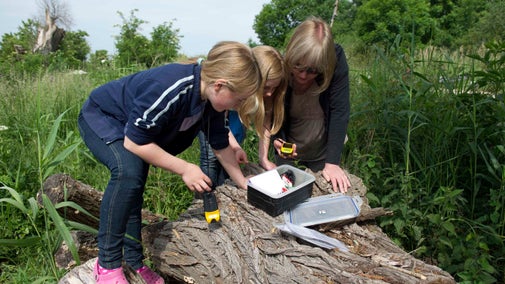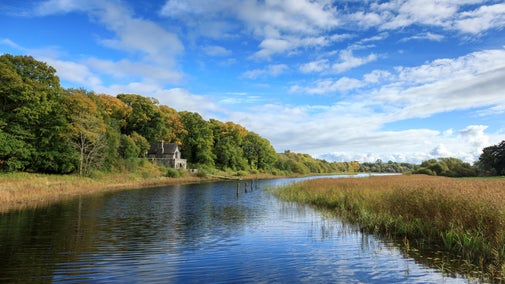
Discover Cadover Bridge
Find out how to get to Cadover Bridge, where to park, the things to see and do and more.

With panoramic views of the surrounding countryside and across to South Devon, Cadover Bridge is a great starting point for a walk on Dartmoor. Ramble across the moor and seek out the archaeological features that can be discovered across this internationally important site. Explore the ancient oak-wooded valley of the River Plym and see what wildlife you can spot along the way.
Starting from the car park at Cadover Bridge, you can follow a circular walking trail to Shaugh Bridge or go to the head of the River Plym if you’re feeling more adventurous. Look out towards the clay works from Shell Top and enjoy the stunning views over South Devon.
Great and Little Trowlesworthy Tors, Hentor and Calveslake Tor are all near to Cadover Bridge and within walking distance. It's a good idea to bring a map and compass and wear suitable clothing and footwear. Some routes will involve crossing rivers so please take extra care when water levels are high.
Trowlesworthy and the upper area of the River Plym are noted for their archaeology, and several sites are within easy walking distance of Cadover Bridge. Winter and early spring are a good time of year to look for these sites, as in summer the bracken grows tall, making them harder to find.
The stone rows of Trowlesworthy are about 100m apart to the south of Great Trowlesworthy Tor and believed to date from the Late Neolithic period. There is a single row running from east to west and a double row running from north to south.
The single row has at least 44 stones, and at its eastern end is a cairn encircled by 13 standing stones. The double row has over 100 stones, and at its north end is a circle of eight standing stones with no trace of a cairn.

They're about a two-mile walk from Cadover Bridge, taking you over the Blackabrook, past Trowlesworthy Farm and along a traditional granite-lined leat.
There are some lovely examples of Bronze Age hut circles and burial cairns around the area of Trowlesworthy Farm. In addition, there are post-medieval pillow mounds, vermin traps and animal runs forming part of a warren – all well worth seeking out on a walk from the car park.
While out enjoying a walk on the moor why not try letterboxing, a classic Dartmoor activity, or maybe give geocaching a go. You can find more information on the Dartmoor National Park’s website which offers hints and guidance on how to get started.

During winter the resident population of snipe is boosted by arrivals from as far afield as Iceland and Scandinavia. These very well-camouflaged birds use their long straight bills to hunt out worms and other invertebrates in wet ground.
Golden plover are visitors to Dartmoor and will use the higher land for chasing down beetles and insects with their long legs. They often form large flocks in winter and fly in tight formation.
As spring approaches some rare migrants make their way to Dartmoor. Probably the best known is the cuckoo, whose call heralds the start of spring. Despite a severe recent population decline, the cuckoo is still a regular summer visitor to Dartmoor.
The ring ouzel is a less well-known visitor. A member of the thrush family, it is slightly smaller and slimmer than a blackbird, with a distinctive white patch on its breast. Mainly upland birds, the steep valleys and rocks of Dartmoor make an ideal place for it to breed.
It breeds between mid-April and mid-July, nesting on or close to the ground, and usually in heather. The ring ouzel can produce two broods a year, feeding the young mainly on earthworms and beetles.

Find out how to get to Cadover Bridge, where to park, the things to see and do and more.

Discover ancient oak woodland on Dartmoor. Walk along the River Meavy or explore the upper Plym Valley with the dramatic Dewerstone Rock and industrial ruins.

Discover what you can do when visiting Plymbridge Woods, a 'bridge' between rugged open, windswept moorland and the city of Plymouth and the coast.

Help to look after National Trust places by observing a few simple guidelines during your visit and following the Countryside Code.

Go geocaching – it's like a digital treasure hunt using a handheld GPS and a sense of fun. You can try it for free at many places we look after.

Despite our increasingly urbanised lives, there are still wild places in the UK to escape to. Why not visit one of the many areas of outstanding natural beauty that we look after?

Plan a visit to one of the special countryside places in our care and discover the benefits of being in the great outdoors. Pack your walking boots and get ready to explore woodlands, valleys and rivers.

Explore some of the finest landscapes in our care on coastal paths, accessible trails, woodland walks and everything in between. Find the best places to walk near you.